KÚ Cycle: Rewriting Bike Design and Pathways to Purchase

This week I wrote about the process of buying a new road bike. Yes, buying a bike is fun and it’s fine to let emotions run the process. To a point. If the bike just doesn’t fit then its sex appeal diminishes.
Today I’ll talk about the process of ordering a KÚ Cycle TF1, a tri bike generating a lot of talk on our Reader Forum. It’s about the wildest looking tri bike you’re likely to see but it’s not wholly apart in its design. It bears similarities in looks and in technical theme with the CADEX bike ridden by Kristian Blummenfeldt, Sam Appleton and others. Both these bikes have a compelling aero story.
But I’ll tell that story elsewhere, when I write about the bike’s performance (with me aboard). Today I’m writing about the process of getting one and there’s a compelling story here as well. I consider these discussions you and I have to be important, because too many of you get bikes that are great on paper but not great in practice because it’s the wrong bike for you; the wrong size; it’s set up badly; it’s not comfortable; and you’re ultimately unhappy.
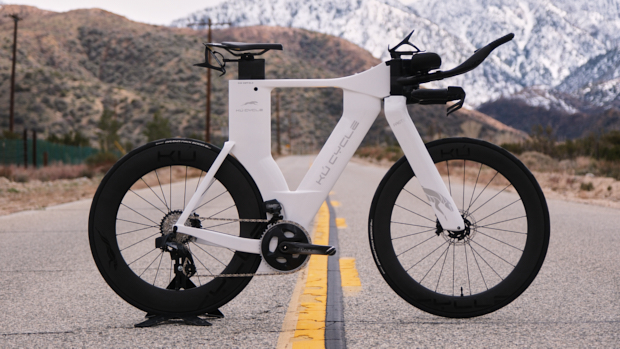
What will rule during this decade is not product, but logistics. We have really good product now. In triathlon, running, road and gravel cycling, open water swimming, there’s almost no product I’m looking for that’s not currently made. Here’s where we suffer in sport: Pathways to purchase. What is the most efficient sales channel? Is it consumer direct or through full service bike shops? Independent or company-owned bike shops? If B2C, should it come to you in a box or should the bike be handed to you fully assembled? How do you know which size to buy? How do you know your proper fit metrics? Who will perform service on your bike?
There might be reasons not to fall in love with KÚ, but the pathway to purchase is not one of them. Each of these bikes is custom made for the user, and the gateway is the bike fitter. There are some really good fitters all over Europe husbanding the KÚ purchase process (this bike brand is from the Netherlands), and the U.S. fitter network is just now getting built out. KÚ was at our last bike fit workshop and 12 fitters were given the opportunity to learn about this process.
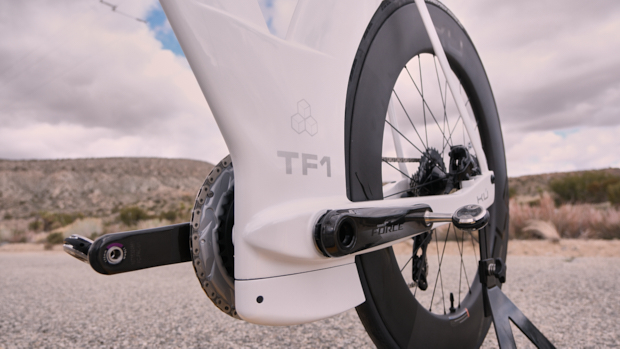
Of course it all starts with the bike fit. You end up with a set of fit coordinates and, predictably, the coordinates that matter most are the rise and run from the bottom bracket to the (back of the) pad, aka Pad X/Y. The other necessary measures place the saddle in space (again relative to the BB). Your fitter already knows how to do this, if he’s good. But… there are bad doctors out there. Bad accountants. Bad lawyers and also bad bike fitters. There are clues to know who the good bike fitters are. One such clue comes from looking at the bike positions of the people they fit (just like a beautician might show you a portfolio of hairstyles he or she performed).
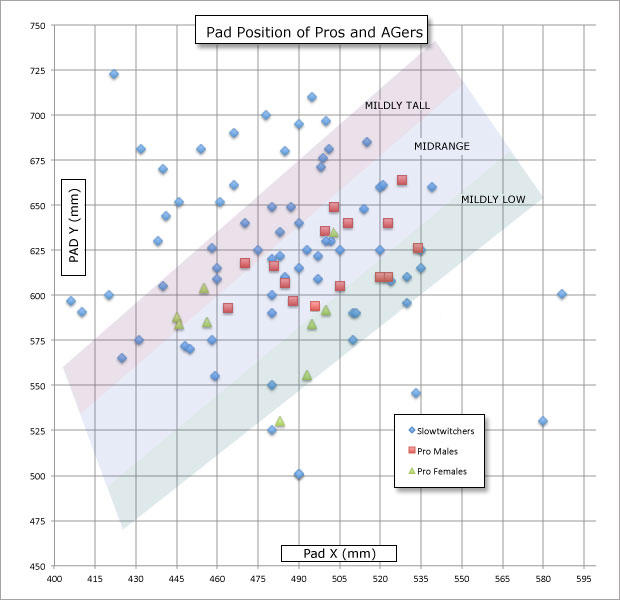
Another way is to just plot the Pad X/Y from your fit session and see what it looks like against others. See if your fitter placed you in an orthodox position. Above is a chart from some years ago (measured to pad center rather than the now more popular pad rear) showing Slowtwitchers (blue) against both male and female pros, and how the pros are almost universally situated inside of a predictable band representing “orthodox” positions, while a lot of Slowtwitchers are just. well, unorthodox. The moral here is this: KÚ, or any custom bike brand, can probably build you a bike that faithfully places contact points under your body, according to the fit coordinates you provide. But garbage in, garbage out. First make sure your fit coordinates are really where you want to ride, because once the frame is made, that's it. It’s yours and it’s uniquely yours.
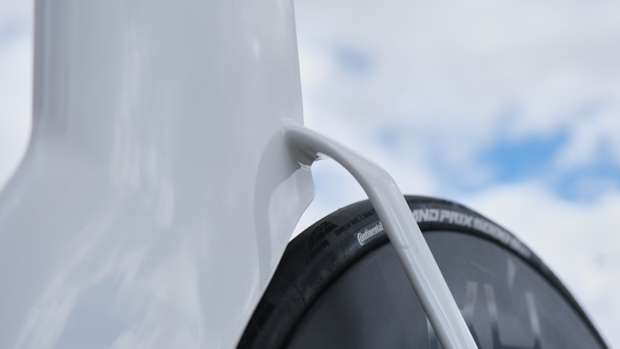
Below are a couple of screenshots from the KÚ order form and it’s pretty straightforward. The obvious distinctive element to every KÚ TF1 is the width of its fork blades and chainstays and by width I mean the distance between these members and the wheel. This is where the KÚ and the CADEX share an aerodynamic theme, which was probably first introduced to triathletes by Specialized when it launched the Shiv Disc. But the convention that KÚ obliterates is the distance from the front wheel axle to the fork crown. That has always been a given span for every bike. That distance might be slightly different from one bike to the next but it’s always a settled-upon number for any bike. Because bikes today use disc brakes there is no required distance, because there are no rim brake pads to consider. KÚ doesn’t make its bike’s head tubes longer or shorter based on your handlebar height. It makes the fork blades longer or shorter. This is unheard of. Not done. But it’s not impossible to do. It just requires extremely unconventional thinking.
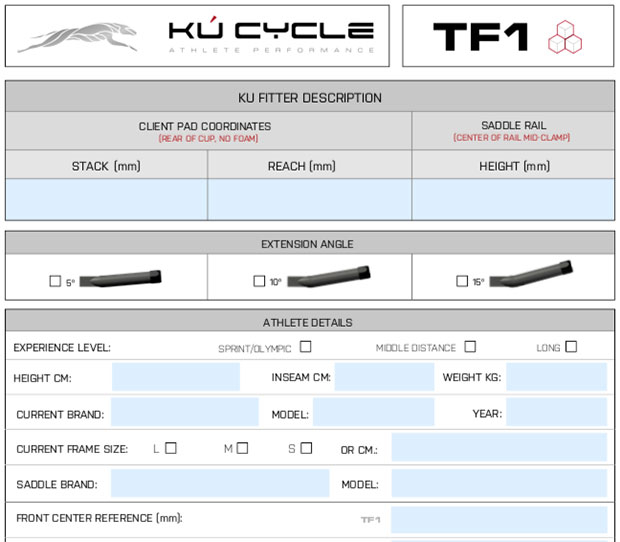
This frame style has multiple blanks, or starter sizes, basically a set of sub-assemblies that allow for larger or smaller frames. I could have had a frame made for my own fit coordinates out of either frame “size” and if I’d opted for the smaller size my frame would have had a front center of 630mm. The taller size yielded a front center of 650mm. That larger template is the frame I’m riding. I’ll report on this frame and how the bike handles when I write up a proper road test. Just, when you choose the frame size and customize from there, your particular frame is made with your necessary top tube, seat tube, down tube and fork blade length. Note that the head tube doesn’t change. Height is gotten via lengthening the fork blades. This is unique. Never has this been done before, and it’s only possible because of disc brakes. This is one of those areas where, when we had our vibrant arguments over disc brakes in tri bikes, my thesis was: We don’t know what tech will be unleashed when the rim brake caliber is no longer a requirement.
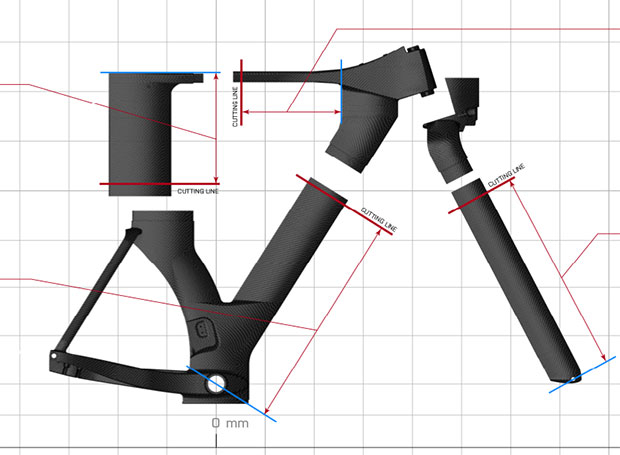
There remains a ton of front end adjustability after the frame is made and you can see the vertical adjustment available to you here. Really, the bicycle is entirely reimagined with a KÚ, and what was a rather dead area where nothing took place – the bike between the fork crown and the stem & handlebar – is now the very busy part of the bike. Right in front of the head tube lay the aerobar, the armrests, and all the adjustability. This of course makes the bike look very different. The one frame metric that is sacrificed is standover height. When I write up a road test I’ll tell you whether I miss standover height or whether this is a metric that we all worried about but really is a non-issue.
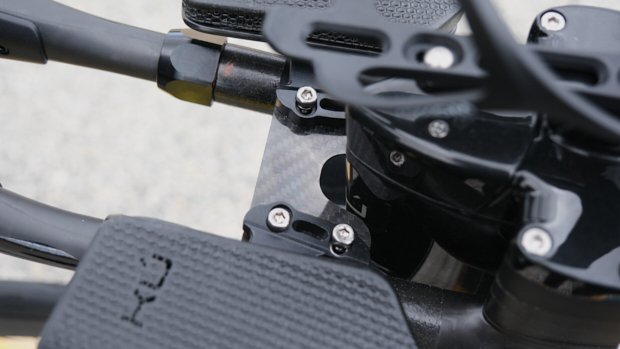
There are some issues with this bike, notably the difficulty as it currently exists to place full forearm armrest extensions on this bike. However, as I recently noted, there are 2 kinds of these, and 1 kind is sort of owned by Profile Design: the 43ASC extension that slots into a clamp made to accept a typical extension. The next time you see this KÚ TF1 in anything I write you might see it with this extension (I’m busy McGuyvering a new front end on this bike right now).
As to the bike fitters in the U.S. who know and understand this brand, there are only 2 as of this writing, and only 1 of them I know. But I think this 2 is likely to become 20 before very long. Here is where you’ll find this company. Is this your next tri bike? I can’t say. Should it be? Same answer. I find this bike compelling for two reasons: It’s the best example to date that I’ve found of a tri bike brand taking advantage of disc brakes; and it’s the first brand to wrap its arms around the bike fitter community in a big way. Any enterprising bike industry executive should take note of this.


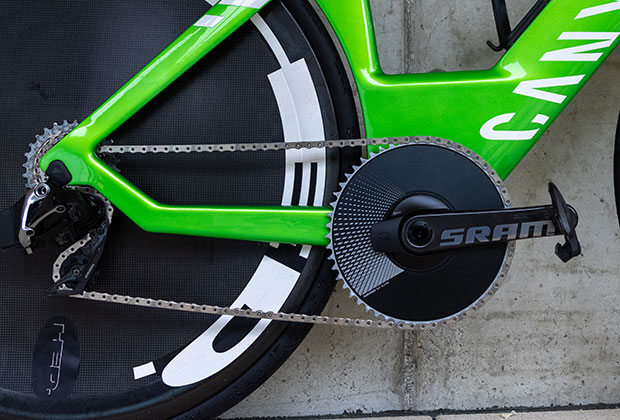

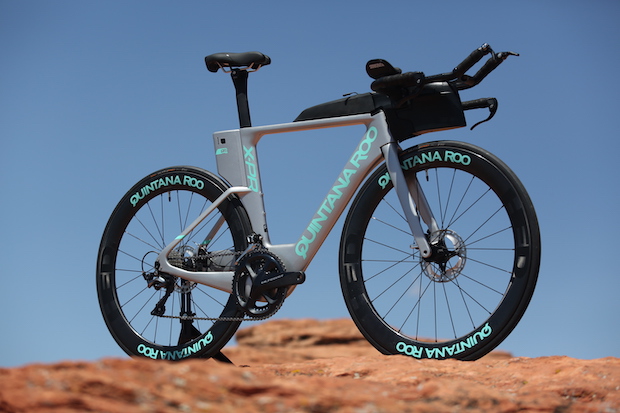
Start the discussion at slowtwitch.northend.network